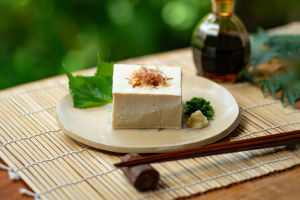Potato chips, a seemingly simple snack, actually have a long and interesting history.
Their emergence and popularity not only reflect people's constant pursuit of delicious food but also demonstrate the exchange of food culture in the context of globalization.
The history of potato chips dates back to the mid-19th century. The legendary inventor is George Crum, an American chef. The story tells that in 1853, a customer named Cornelius Vanderbilt was dissatisfied with the French fries Crum prepared, complaining that the fries were too thick and soft.
In response to this picky guest, Crum decided to slice the potatoes very thinly and fry them until they were crisp. Although the initial response was not as expected, this unique taste quickly won the favor of other customers, gradually forming the potato chips we know today.
While the production of potato chips is straightforward, it requires precise techniques to ensure optimal taste and quality. The first step in making potato chips is to choose the right potatoes.
High-quality potatoes for chips usually have lower moisture and higher starch content, which makes it easier for these potatoes to form a crispy texture when fried.
The next step is washing and peeling. Potatoes are sliced very thinly, usually between 1-2 mm. The precision of this step directly affects the taste and uniformity of the potato chips. The sliced potatoes need to be soaked to remove the starch on the surface, which helps prevent the chips from sticking together during frying.
Frying is a key step in the production of potato chips. Potato chips are fried in hot oil until they become golden and crispy. During the frying process, they need to be stirred constantly to ensure that each potato chip is heated evenly. After frying, the potato chips are drained and cooled to maintain their crispness.
The last step is seasoning. Potato chips can be seasoned in various ways according to the taste of consumers, from classic original flavors to a variety of complex flavors such as onion cheese, barbecue, and spicy.
Seasoning powder is usually sprinkled on the potato chips immediately after frying to ensure that the flavor is evenly attached to each chip.
Since the late 19th century, the delicious taste of potato chips has spread rapidly around the world. In the early 20th century, potato chips began to enter the commercial production stage, and manufacturers gradually emerged and sold potato chips to various countries and regions.
With the advancement of food processing technology, the production and distribution of potato chips have become more efficient, making them a popular snack worldwide.
In the context of globalization, the flavors and types of potato chips have become diversified. Different countries and regions have developed various unique potato chip flavors based on local tastes and cultural habits.
For example, in the United States, classic original and sour cream and onion-flavored potato chips are very popular, while in Japan, matcha and takoyaki-flavored potato chips are unique. These innovative flavors not only enrich the variety of potato chips but also promote the exchange of global food culture.
Although potato chips are widely loved for their unique taste and flavor, their health issues have also attracted increasing attention. Traditional potato chips use a lot of oil in the production process, which may lead to high-calorie and high-fat health risks.
Recently, many manufacturers have explored healthier options, like baked potato chips with less oil or vegetable oil substitutes.
At the same time, the increase in health awareness has also prompted some manufacturers to start using more natural seasonings and fewer additives. These improvements are not only aimed at improving the nutritional value of potato chips but also hope to cater to consumers' demand for healthier food.
As a global snack, the development of potato chips is full of innovation and change. From a small kitchen in the 19th century to today's large food industry, the story of potato chips not only reflects the evolution of technology and the market but also people's constant pursuit of deliciousness.
In the future, potato chips will continue to attract consumers with their unique charm and continue to adapt to changes in health and taste, bringing new enjoyment to diners around the world.


